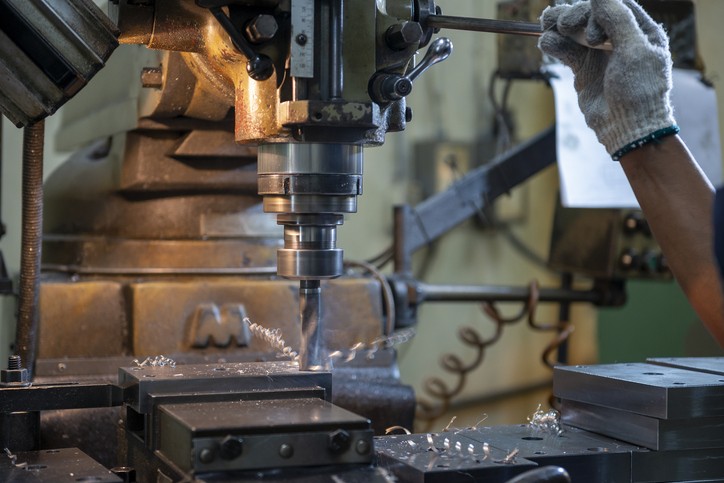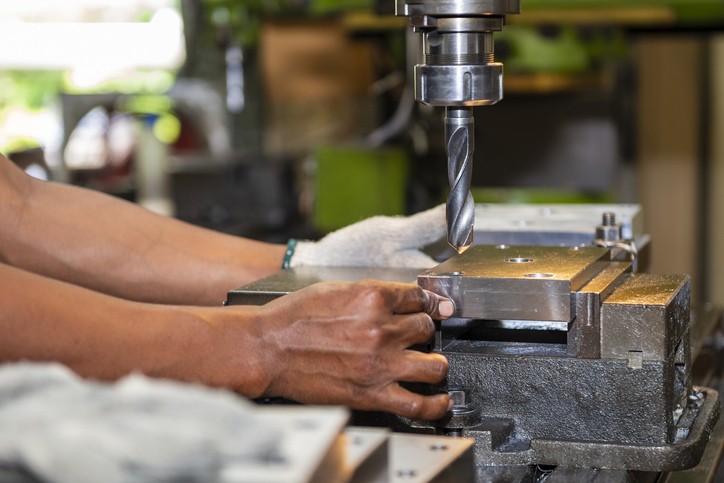
Table of Contents
Advanced machining technologies have emerged due to the need for large-scale manufacturing across various sectors. The horizontal milling machine is one such technology that provides remarkable accuracy and productivity in large quantities.
One of its key advantages is the capacity of horizontal milling machines to excel in quick production. These devices are perfect for high-volume industrial settings since they enable many cuts simultaneously, significantly increasing productivity. This article will examine the benefits and capabilities of horizontal milling machines and how they are used in various sectors.
Understanding Horizontal Milling
Horizontal milling is a machining process of molding metal and plastic materials. It utilizes a machine equipped with a horizontally oriented cutting tool. The cutting tool rotates and removes material from the object, forming the desired shape or surface.
Horizontal milling involves placing the cutting tool parallel to the ground. It is not the same as vertical milling, which uses an upright cutting instrument, such as a drill. The horizontal position allows you to cut alongside the sides of the material, which is ideal for deep cuts and heavy materials.
Key Advantages of Horizontal Milling
In modern manufacturing, horizontal milling machines offer significant advantages over traditional machining methods, particularly for complex projects that require vacuum brazing and precision engineering.
Here’s a detailed look at their benefits:
Improved Chip Evacuation
The efficiency of chip evacuation directly impacts the quality and accuracy of machined parts. Horizontal milling machines excel in this aspect due to their gravitational advantage. Unlike vertical setups, chips and debris naturally fall away from the cutting zone, preventing recutting issues and ensuring clean, burr-free edges. This capability is particularly valuable in full-service manufacturing facilities where consistent quality is paramount.
Enhanced Cutting Stability
Horizontal milling operations benefit from a robust design featuring shorter, thicker cutting tools. This configuration significantly reduces vibration during the machining of large workpieces and intricate designs. The enhanced stability ensures consistent, precise cuts essential for complex manufacturing projects.
Increased Productivity
The superior cutting efficiency of horizontal milling machines translates to higher productivity and reduced operating costs. This makes them ideal for large-scale production runs where precision and speed are crucial. Their ability to handle multiple operations efficiently complements modern vacuum brazing processes in advanced manufacturing facilities.
Better Surface Finish
Horizontal milling machines produce exceptional surface finishes thanks to their efficient chip evacuation system. By preventing chips from melting onto the workpiece, these machines minimize surface flaws and deliver smoother finishes. This capability is particularly valuable in full-service manufacturing environments where final product quality is critical.
Reduced Tool Wear
The effective chip evacuation in horizontal milling significantly extends tool life while maintaining superior surface finishes. By preventing chip accumulation in the cutting zone, tools experience less wear and can be used for longer periods, reducing maintenance expenses and downtime in production schedules.
Applications in Large-Scale Production
Horizontal milling plays a crucial role across various industries, particularly in precision fabricating operations where accuracy and efficiency are paramount. Let’s explore its key applications:
Automotive Industry
The automotive sector relies heavily on horizontal milling for manufacturing critical components. From chassis elements and engine blocks to transmission parts, these machines deliver the precision and consistency required for modern vehicle production. This capability aligns perfectly with CNC rapid prototyping needs during new model development phases.
Aerospace Manufacturing
In aerospace applications, horizontal milling machines are essential for crafting complex structural components and landing gear assemblies. Their superior stability and accuracy make them ideal for military fabrication projects, where tolerances are exceptionally tight and quality standards are stringent.
Heavy Machinery Production
The robust nature of horizontal milling machines makes them indispensable for projects demanding deep cuts and substantial material removal. Their precision fabricating capabilities excel in handling intricate shapes and larger workpieces, ensuring consistent quality across production runs.
Construction Equipment Fabrication
The horizontal spindle configuration enhances stability and minimizes vibration during cutting operations, making these machines perfect for heavy-duty applications. This design is particularly valuable for CNC rapid prototyping of construction equipment components, where both accuracy and durability are essential. The superior control over the cutting process ensures consistent results, crucial for meeting stringent military fabrication standards in specialized equipment production.
Horizontal vs. Vertical Milling: When to Choose Which
When choosing between a horizontal and vertical mill, it’s essential to understand the particular needs of the workpiece you plan to process. A horizontal mill is ideal for thicker and bigger stock because it can withstand the high pressures required during cutting.
However, because a vertical mill offers greater control and accuracy, it would be more appropriate if your project had several small, complex components. Cutting accuracy also plays a role in tool selection decisions. The equipment’s design makes vertical mills ideal for precision cutting and highly accurate activities. Therefore, they are appropriate for applications requiring precise or intricate cutting.
Advancements in Horizontal Milling Technology
Here are some advancements in the horizontal milling technology:
Multi-axis Capabilities
The capability of multi-axis milling machines to handle a workpiece from different angles reduces errors, improves accuracy, and eliminates the need for multiple setups. The flexibility of movement offered by multi-axis machines enables the complicated geometries and sophisticated patterns found in parts like medical implants, automobile molds, and turbine blades for airplanes.
Integration With Automation Systems
Modern components and innovative technical technologies have all contributed to the structure of sturdy and dependable horizontals capable of withstanding harsh working circumstances. Additional cutting-edge machine features, including software interfaces, better cooling systems, and automated tool changes, have increased machine efficiency and made operations more user-friendly.
Software Improvements for Custom CNC Milling
The introduction of computer numerical control (CNC) into horizontal milling machines was revolutionary compared to earlier models. When this cutting-edge integrated technology first appeared, CNC in horizontal milling machines operated with complete control over the machining details, from simple to the most intricate geometrical features, with the least human intervention. Therefore, the technology will result in high-precision efficiency, reduced waste, and a spiraling increase in output rate.
Cost Considerations
A significant disadvantage of horizontal milling machines is their high initial cost. This equipment often demands a considerable financial commitment. In addition, horizontal milling machines have high operating and maintenance expenses. Such machinery requires more energy because of their strong motors, resulting in increased electricity costs.
However, horizontal milling machines can generate long-term savings despite their significant initial and recurring expenses. Their capacity to accomplish complicated jobs with great accuracy results in faster manufacturing times and improves overall efficiency. In high-volume manufacturing environments, these machines can pay for themselves over time by boosting output and product quality.
Best Practices for Implementing Horizontal Milling
When implementing horizontal milling, here are some of the best practices to remember:
Proper Machine Selection
Use the appropriate cutter for the type of cut and the material. It prolongs the tool’s life and increases efficiency.
Operator Training And Skill Development
Precision is essential in milling. Operators must meticulously monitor and modify machine settings to ensure the products fit precise standards. They must also be able to promptly detect and resolve difficulties that develop throughout the milling process to preserve productivity and quality. This is why operator training and skill development is essential.
Maintenance and Optimization Strategies
Regular maintenance inspections will keep the equipment in good condition. Lubricate moving parts and repair worn-out components to keep the machine operating smoothly.
Horizontal milling machines are a significant resource in large-scale production. Their extraordinary characteristics, including increased productivity, accuracy, and adaptability, make them an excellent alternative for various sectors. As such, the manufacturing industry will continue to undergo a revolution thanks to horizontal milling machines and the ongoing progress of machining technology. Contact NAMF to learn more about horizontal milling and its role in large-scale production.

